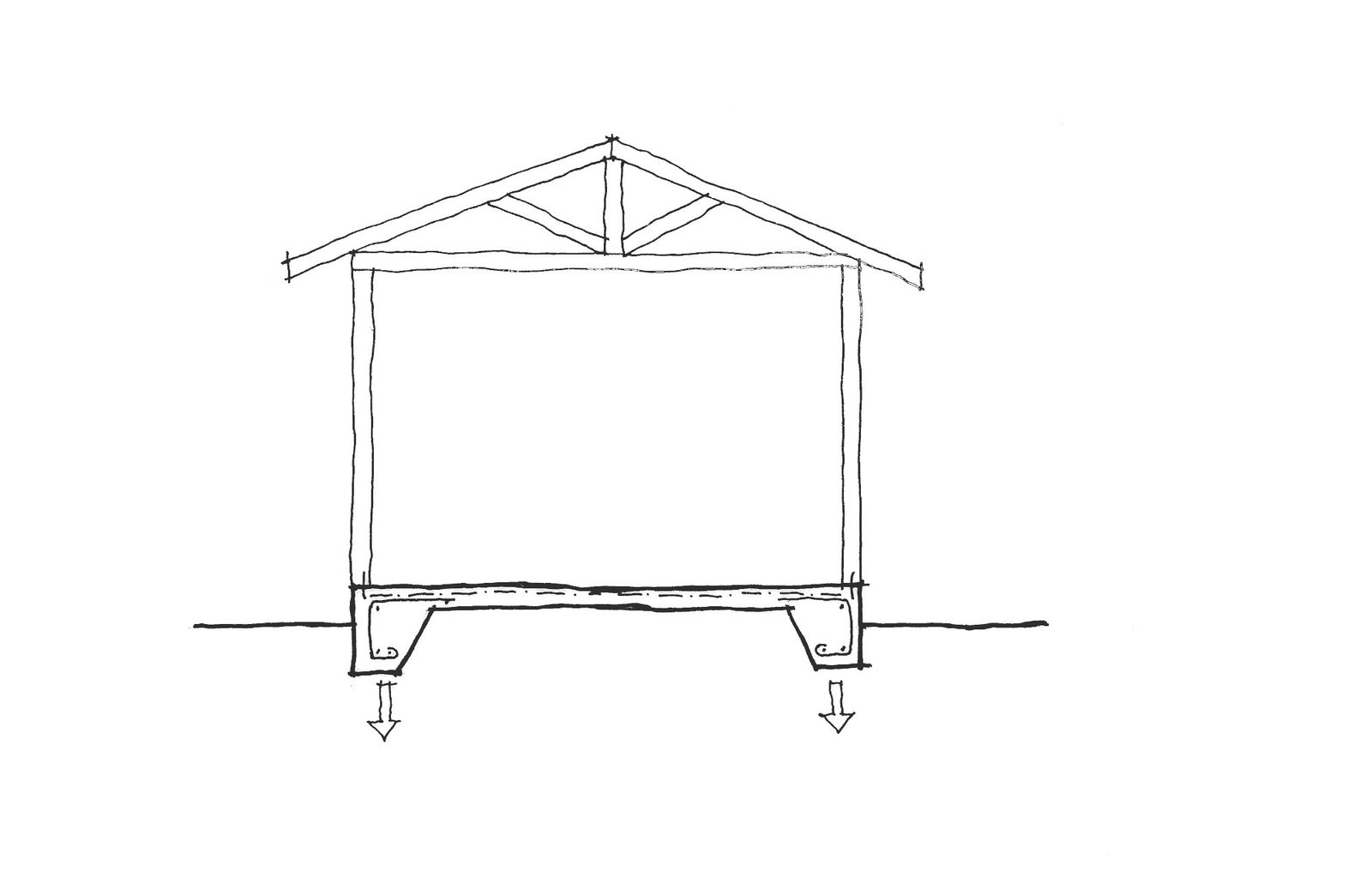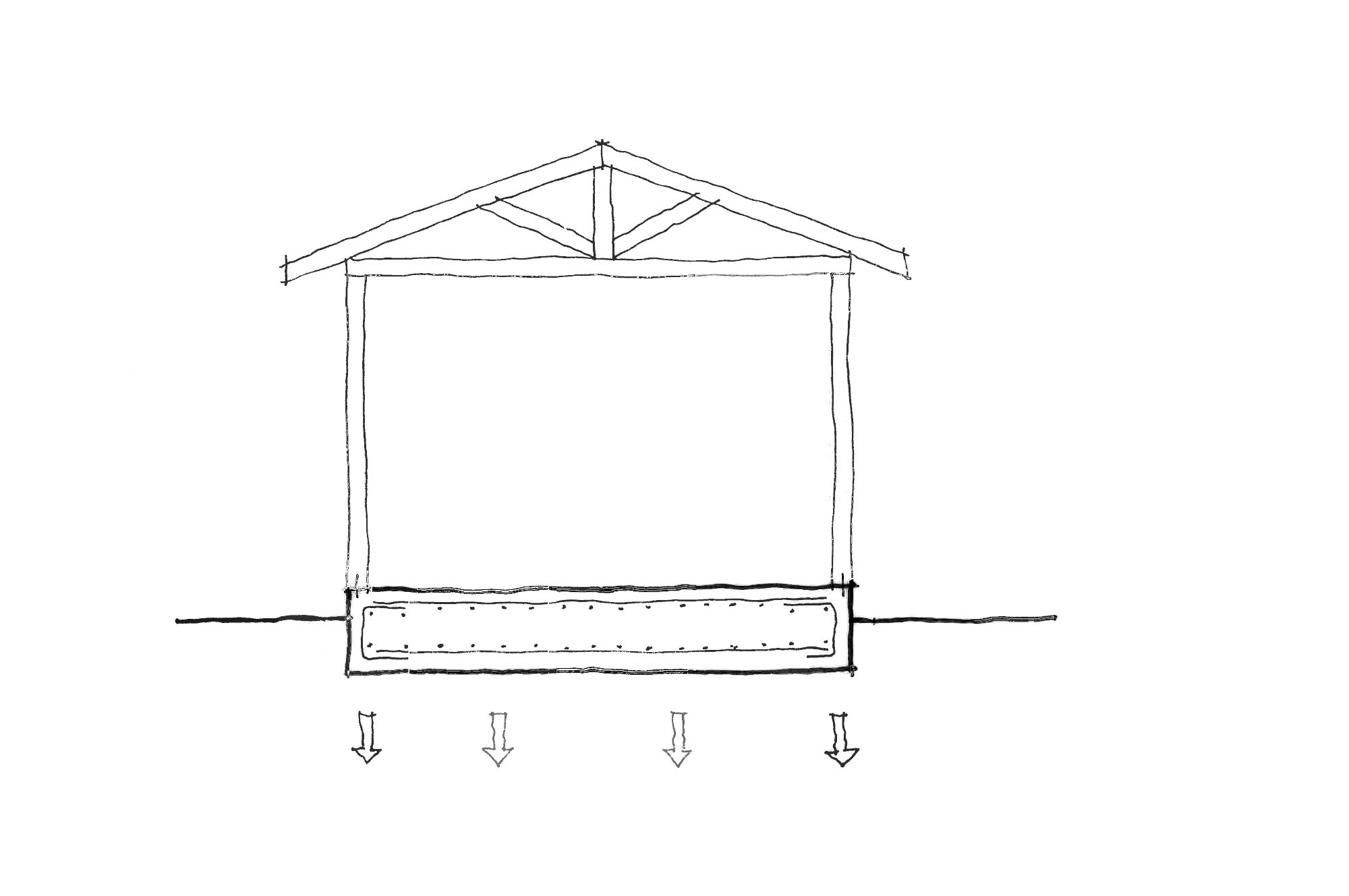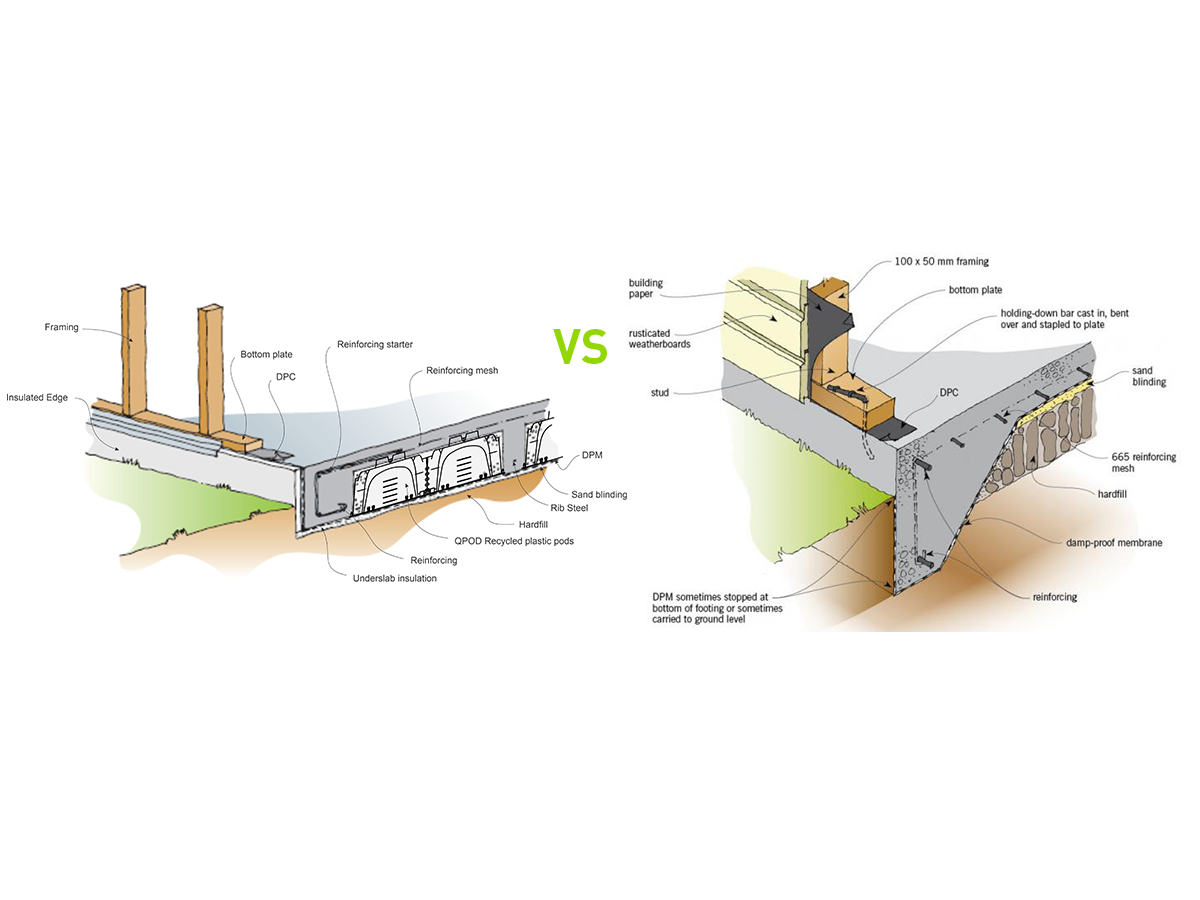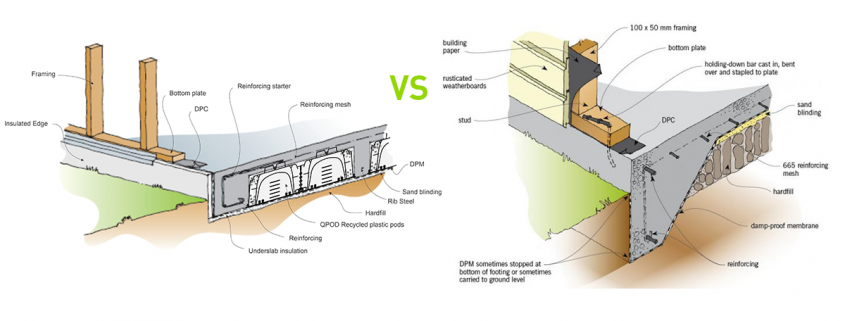Building Basics – Conventional vs raft foundations
Every building needs a stable foundation and it’s important to know what you’re getting before you buy. This is why your property inspector will be closely checking your foundations. Your house might be constructed with a conventional or a raft foundation – but what’s the difference, and why does it matter?
What’s a conventional foundation?
A conventional foundation is the ‘old way’ they used to do concrete floors – and one most builders are familiar with, as it’s been around for years. A conventional foundation is essentially concrete poured straight onto the ground at a shallow depth, into a (generally) 100-mm thick slab, reinforced with steel. Around the edges and where any load-bearing internal walls would go, the ground would be dug out with excavated footings. Here, the concrete pour would be thicker to allow the load of the structure to transfer properly. The house is then built on top of the slab.

Image: Seismic resilience
A concrete-poured conventional foundation is far less likely to be used these days, with raft foundations – which we’ll look next – taking over as the preferred method. A conventional foundation has its limitations and can be prone to cracking (especially in earthquake prone areas). Older, unreinforced slab-on-ground foundations performed poorly on marginal and poor ground in the Christchurch earthquakes[1].
What’s a raft foundation?
A raft foundation, or mat foundation, is a type of slab-on-ground foundation used in both residential and commercial construction. Raft foundations generally don’t require excavated footings and are formed ‘on the ground’ rather than being dug in. The raft ‘floats’ over the ground, the way a raft floats on water. This type of foundation spreads the load of the building over a larger area than other foundations.

Most commonly seen in new construction is a polystyrene ‘pod’ with hardfill, laid over an under-slab polythene ground sheet. This type of foundation is quicker and easier to construct, with less excavation and earthworks, while the polystyrene offers superior insulation. Raft slabs were proven in the Christchurch earthquakes[2] to be seismically stronger than conventional slabs due to being on top of the ground as opposed to being in the ground.
 Raft foundation vs conventional foundation
Raft foundation vs conventional foundation
Image: Qpod
What is your property inspector looking for?
Your property inspector will ascertain how much movement or cracking there has been in your foundation if it is visible. A good place to look at the concrete foundation is in the garage. Gaps of 2-3mm may mean there is ground movement under the slab, and it’s worth getting an engineer’s report.
Another place to check is the ground levels around the slab and how much these come up to your cladding. Ground levels close to concrete mean moisture is more likely to damage the cladding or the framing.
Everything worth doing well starts with a good foundation! Ensuring you know what you’re buying with a house inspection report means that you can sleep easy knowing you are on steady ground.
[2] https://www.qpod.nz/2019/12/10/qpod-raft-slab-or-conventional/








